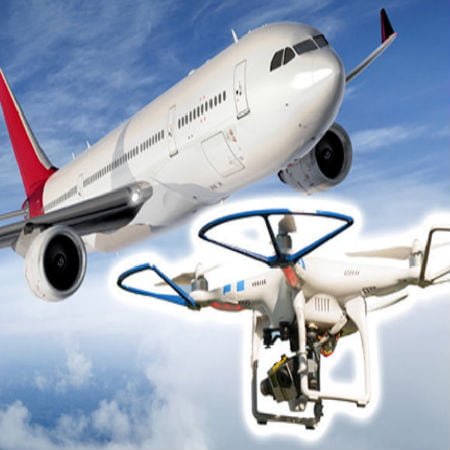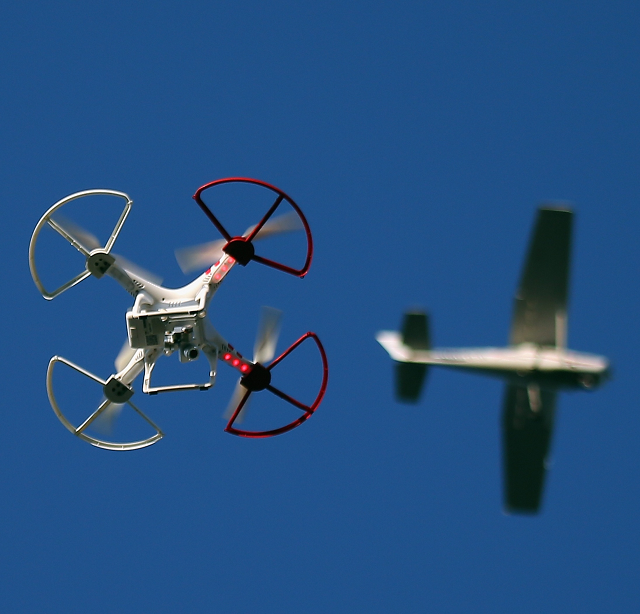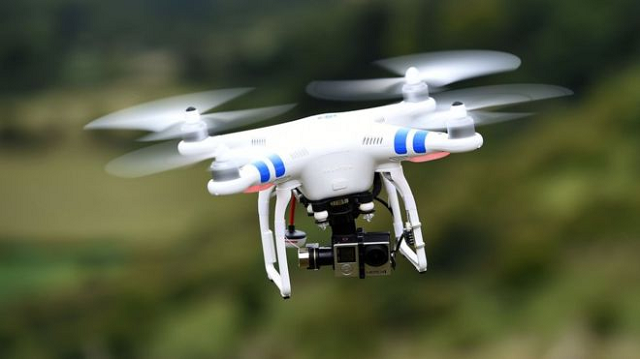
Unmanned aerial vehicles, commonly referred to drones, have in many respects threatened airspace safety, including intended collisions or other interference with other aircraft, particularly business aircraft.
The British Airline Pilots Association (BALPA) had earlier called for an investigation into what could be the effect if a drone ramps into a commercial aircraft. Lots of people have voiced concerns in the 23 near-misses in the United Kingdom in the course of a six-month period last year, twelve of which were rated “A” class, they adjudged that drones are threats to aircraft.
The Dangers Drones Pose to Jet Engines that Truly Drones are Threats to Aircraft
Scroll down for video

Tech Times
Noteworthy is the fact that there’s a chance a drone could get sucked into a jet engine, thereby setting off the blades from their ring. Furthermore, it could spell doom for passengers onboard as there’s a chance that drones’ lithium batteries could catch fire on impact. This is where the idea that Drones are threats to aircraft comes in.
Speculations rife that a drone launching into a jet engine could be more fatal than a bird strike. Ian Horsfall, an airline engineer, however, dispelled such claims, saying, “The controlling factor is how big a drone it is. If it’s a small drone, then it’s unlikely to be any worse than the equivalent size bird.”
He further stressed, “I think the standard test for aero engines is typically a 4 lb/2 kg bird or bird simulator. From an engine point of view, there’s no reason why a drone would be any worse than a bird of equivalent mass. We know for instance that jet engines can take goose impacts, which are getting up towards 10 kg. And although it’ll definitely take the engine out, it won’t necessarily result in anything more serious than that.”
Losing an engine wouldn’t necessarily result in crash-landing, as planes could rely on other engines in such situations, plus, one can bank on pilots’ expertise to outmaneuver such scenarios. Issues concerning that drones are threats to aircraft can be quantified on the damage that will reach the engine, further compromising other parts of the aircraft. As a drone is made of metal and plastic, it makes it potentially more dangerous that birds, which are made of flesh.
Horsfall has this to say on the matter, “The engines are built to contain an ejection of a fan blade usually, which is a fairly heavy lump of material.”
Horsfall claimed that the lithium batteries that power most drones are not exactly a threat like people have been led to believe. According to him, “One of our students is doing some work looking at what would happen if (a drone) was ingested into an engine, particularly from the point of view of the battery. The battery is the largest mass in a multi-copter, although it’s not necessarily very hard, but of course has the potential to burst into flames as well.”
Horsfall’s team did perform some trials where they assumed a battery hitting a fan blade and discovered that nothing happened immediately as most would predict. Rather, it took “a few seconds or tens of seconds” for the battery or its remnants to set ablaze, they, however, discovered that the fire was persistent afterward.
“What that actually means is that if you get it ingested into the engine, it’s probably not something you need to worry about because it will get chopped up into little pieces and thrown out the back of the engine long before anything more energetic happens to it,” Horsfall further said.

Daily Mail
He added, “But were it to hit the radome or the leading edge, you’ve potentially got a fire source in there now as well. If you look at the picture from bird strikes, it’s not unusual for the bird to end up embedded in the aircraft, particularly if it hits the softer areas like the radome. So there is potentially a fire risk from a UAV on top of the impact risk, and it may well be that rather than worrying about them getting sucked into an engine and the consequences of that, what we need to worry about is the consequences of them hitting elsewhere on the air frame.”
“I suspect the threat is not the multi-copters that we have this year, but the multi-copters that we have next year or the year after, and it would be nice to get the legislation ahead of the technology rather than behind it.”
Regardless of how many attempts Horsfall makes to calm fraying nerves, most people would still regard that drones are threats to aircraft.
Watch the video below